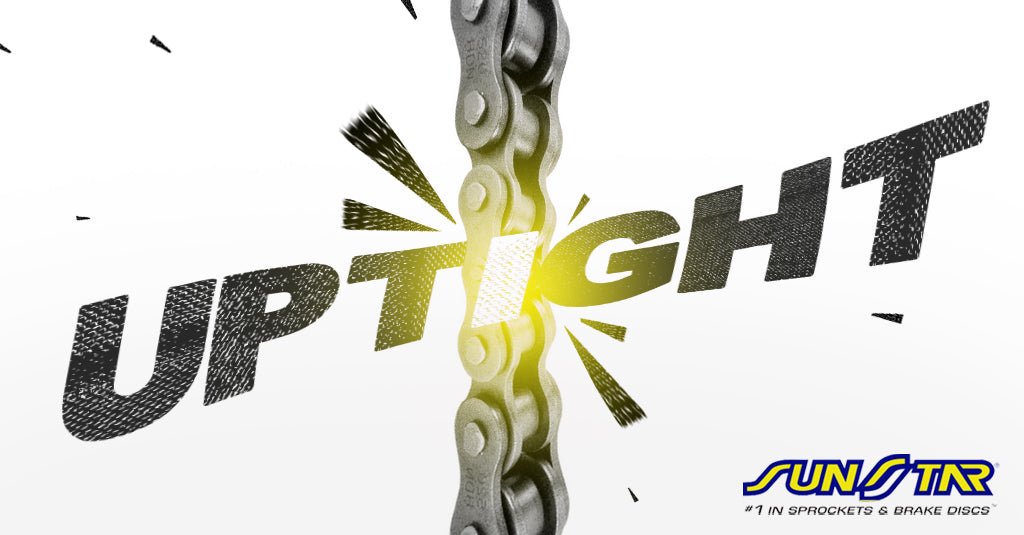
The coronavirus pandemic has everyone a bit tense these days. And no wonder; even the most mundane and routine tasks that we all used to do without giving a second thought have suddenly become sources of anxiety. But here’s a task that might just help you relax … and help your bike’s drivetrain unwind a bit too.
Stress management. Let’s wander to the garage and get into a little bike therapy. It’s the perfect time for a simple stress management exercise: managing your bike’s chain tension, that is. Now, we all know that a chain that is too loose can be a problem. Excess slack can create slop in throttle control, cause the chain to slap against the bike’s frame, and could even skip over sprocket teeth or slip off of the sprockets altogether. But did you know that a chain adjusted too tightly can be just as bad?
Uptight and strained. To avoid having a loose chain, many riders crank on the chain adjusters until the bike’s chain is taut. But a chain adjusted as tight as a guitar string creates a significant strain on the entire drivetrain, making it much more difficult to spin the rear wheel. That means it takes more of the available engine power to overcome all of that tension to get the bike moving and keep it moving. All of that strain also creates much greater wear and tear on the chain, sprockets, and other components since everything is stressed. Even shifting can become more difficult since driveline lash is severely limited. Clearly, having a chain that’s uptight is no good. So, where is the sweet spot between too tight and too loose?
Meet me in the middle. Properly checking chain tension is easy, if you know where to go. And that’s usually smack dab in the middle of the lower chain run between the front and rear sprocket. That’s the part of the chain that will deflect up and down the most. Now that you’ve found the middle of the chain, it’s time to find the ideal spot between too loose and too tight.
Ups and downs. Using a gloved finger or a tool such as a screwdriver, lift up gently on the chain at the center point. A properly adjusted chain deflects upward and downward about an inch or slightly more. If the deflection is less than that, the chain is too tight. If it moves up and down more than an inch or so, the chain is too loose. Check your bike’s owner’s manual for the precise measurement called for on your machine.
Put a positive spin on it. If you’ve nailed the chain adjustment, the rear wheel should spin forward easily with no binding, grinding, or groaning. Be sure to spin through the entire length of chain, noting if there are any individual spots where the chain seems to be tighter or begins to bind. That could indicate a worn chain that needs replacing before it does more damage.
Roll with it. With the chain no longer wound tight and now spinning freely and happily, wrap up your bike’s drivetrain stress management session with a dose of lubrication. Proper “relaxed” chain adjustment plus lubrication will ensure your chain’s components roll easily across the sprockets with minimal resistance, helping you maximize all of that power your bike produces. And that means you can put some serious social distancing between you and the rest of the pack.
When it comes to selecting new components for your bike’s drivetrain, explore the full range of sprockets, chains, and lubricants available for your bike by visiting the SUNSTAR website at sunstar-braking.com. Need help selecting the right parts? Just ask!

